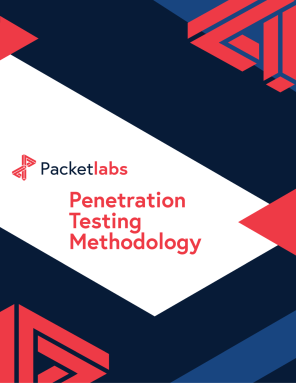The Rise of Hackers in APAC
- Why APAC is Facing Rising Cybersecurity Threats
- 1. Rapid, Uneven Digital Transformation
- 2. Industry-Wide Digitization
- 3. Growing Economic & Geopolitical Complexity
- 4. Inconsistent Cyber Maturity Across the Region
- What the APAC Region is Doing to Strengthen Cyber Resilience
- How Australia is Leading the Cyber Defense Shift
- The Rise of Hackers in APAC (and the Associated Stakes for APAC CISOs)
- How Packetlabs Works With APAC Organizations
- A Clear Path Forward for APAC Cyber Resilience
- Conclusion
Would you like to learn more?
Download our Pentest Sourcing Guide to learn everything you need to know to successfully plan, scope, and execute your penetration testing projects.
The Asia Pacific (APAC) region is experiencing one of the fastest digital transformations in the world. Organisations across Australia, New Zealand, Singapore, Japan, and the broader region are modernizing rapidly by embracing 5G, cloud, remote work, AI, and massive digital adoption.
But with unprecedented innovation comes unprecedented risk.
Cybercriminals now target APAC more than any other region. Since 2021, 76% of APAC organizations have experienced an increase in breaches, costing an average of over $3 million per incident. Countries like Australia, Japan, and India faced the worst of these attacks, signaling a region-wide challenge that continues to escalate.
And despite the rising threat, many APAC organizations still struggle to detect and remediate attacks quickly. According to Forrester, it takes APAC companies an average of 32 days to find and eradicate a breach and 12 days to recover.
The picture is clear: digitisation has outpaced cybersecurity. APAC organizations need clarity, resilience, and a proactive plan to stay ahead.
Why APAC is Facing Rising Cybersecurity Threats
Cybersecurity in Asia Pacific (APAC) is undergoing a critical transformation. As cyber threats grow more sophisticated and region-specific, organizations are rapidly investing in threat intelligence to stay ahead of adversaries.
According to the latest Forrester report, The Top Trends Shaping Threat Intelligence in Asia Pacific, 79% of senior security decision-makers in the region plan to increase their threat intelligence budgets in 2026, outpacing their peers in Europe (71%) and North America (77%).
This surge in investment reflects a strategic shift from reactive security models to proactive, intelligence-led defence. Here's why APAC leaders are ramping up cyber resilience investments:
1. Rapid, Uneven Digital Transformation
APAC includes both highly developed and emerging digital economies.
Mature markets like Japan, Singapore, and Australia accelerated cloud, 5G, IoT, and AI initiatives
Emerging markets experienced explosive consumer digital adoption
But cybersecurity infrastructure and skilled security talent haven’t grown at the same pace.
The result: a high-value target with low barriers to entry.
2. Industry-Wide Digitization
Digitisation is no longer limited to finance or technology.
Sectors like healthcare, energy, manufacturing, logistics, and government are rapidly adopting digital processes, creating expansive new attack surfaces that threat actors are quick to exploit.
3. Growing Economic & Geopolitical Complexity
Territorial conflicts, increased state-sponsored activity, and strained budgets are affecting cybersecurity readiness. A recent EY survey showed CISOs across APAC grappling with:
Higher attack volume
More severe intrusions
Budget constraints preventing adequate defense
Ransomware, remote work, and supply chain threats continue to amplify the challenge.
4. Inconsistent Cyber Maturity Across the Region
APAC lacks unified regulatory standards. Each country operates independently, creating fragmentation in security practices.
Singapore, Malaysia, and Japan lead the region
The Philippines and Myanmar lag
Smaller nations like Timor-Leste and the Solomon Islands rank near the bottom
With varying maturity levels, regional cooperation and coordinated response become difficult.
What the APAC Region is Doing to Strengthen Cyber Resilience
The region is beginning to make strategic moves to combat rising threats:
ASEAN cybersecurity cooperation continues to expand
Many APAC countries have introduced or strengthened data protection regulations (namely Hong Kong, the Philippines, South Korea, Taiwan, China, Japan, and Australia)
Government-led investment, training, and security modernization programs are gaining momentum
APAC’s cybersecurity posture is improving, but there is still a significant gap to close.
How Australia is Leading the Cyber Defense Shift
Australia has become a regional model for strong cybersecurity enforcement and modernisation.
Average breach cost: over AU $4M (one of the highest globally)
Penalties for repeat offenders: increased from AU $2.22M to AU $50M
National cybersecurity strategy: AU $1.67B investment over 10 years
Clear requirements for companies to maintain robust cybersecurity controls
These changes are driving measurable results.
Recent reports found:
40% of Australian companies are confident in their software supply chain security
Comparable confidence in Japan and India remains at 26% and 35%
Australia’s combination of stricter legislation, government funding, and cross-industry collaboration is reducing risk, thereby setting a benchmark for neighboring countries.
The Rise of Hackers in APAC (and the Associated Stakes for APAC CISOs)
Cyber leaders across APAC face a unique and challenging environment:
Expanding digital ecosystems
Fragmented regulations
Rapid cloud and SaaS adoption
Shortage of skilled cybersecurity professionals
Intensifying threat activity
CISOs must make strategic decisions with limited visibility and increasing accountability. The question is no longer “Will we be attacked?” but “How prepared are we to withstand the attack?”
In a rapidly maturing digital region, the biggest threat to APAC organizations isn’t just cybercriminals; it’s the assumption that existing controls are enough.
Assumption leads to:
Blind spots in identity and access
Undetected misconfigurations
Overreliance on automated scanners
Limited visibility into cloud and third-party exposure
Attackers count on these assumptions. Penetration testing provides the clarity to eliminate them.
How Packetlabs Works With APAC Organizations
At Packetlabs, we help APAC organizations build lasting security confidence through 95% manual, OSCP-minimum, zero-outsourcing penetration testing. Our methodologies go beyond checklists and automated tools to simulate how real attackers operate in APAC’s complex digital environment.
We help enterprises and SMBs:
Validate security effectiveness
Identify unknown vulnerabilities and chained attack paths
Strengthen cloud, identity, and network resilience
Meet regulatory and cyber insurance requirements
Support board-level reporting and risk communication
A Clear Path Forward for APAC Cyber Resilience
APAC organizations can significantly strengthen their defenses by prioritizing:
Zero-trust architecture
Extended detection and response (XDR)
Cloud and identity hardening
Manual penetration testing aligned to global standards
Continuous visibility of attack surfaces
Security maturity assessments and improvement roadmaps
Packetlabs supports this journey with:
Infrastructure, cloud, and application penetration testing
Red team and assumed breach engagements
Cyber maturity assessments
Compromise assessments
Attack surface analysis
Conclusion
APAC’s digital economy will only continue to expand (and so will its threat landscape.)
Organizations that invest early in proactive, adversary-informed cybersecurity will be the ones who gain resilience, regulatory readiness, stakeholder trust, and operational continuity.
Contact Us
Speak with an Account Executive
Interested in Pentesting?

Penetration Testing Methodology
Our Penetration Security Testing methodology is derived from the SANS Pentest Methodology, the MITRE ATT&CK framework, and the NIST SP800-115 to uncover security gaps.
Download Methodology
Pentest Sourcing Guide
Download our Pentest Sourcing Guide to learn everything you need to know to successfully plan, scope, and execute your penetration testing projects.
Download GuideFeatured Posts

November 26 - Blog
ChatGPT and Other AI Platforms May Be Used To Craft Malicious Code
While many AI tools create opportunities for innovation, others are using them to create malicious code. Here's what you need to know about the rise of AI code by ChatGPT and other AI chatbots.

November 14 - Blog
The Rise of Hackers in APAC and Its Implications for Australia
While APAC is steadily emerging as a global innovation hub, the region's massive digitization post-pandemic has outpaced its cybersecurity preparedness and has led to a spike in breaches.

November 06 - Blog
9 AI Enabled Cybersecurity Tools in 2025
Discover 5 AI-powered cybersecurity tools that support red teaming, threat detection, and vulnerability discovery efforts.







